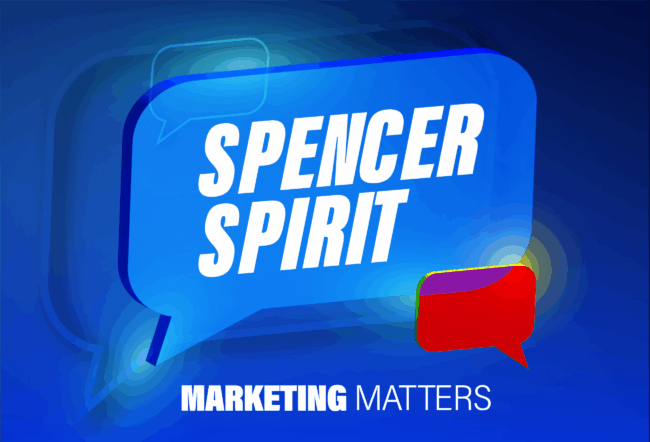Wharton marketing professor Americus Reed talks about the risks and rewards for companies that take a political stand during this polarizing election cycle. This is the first half of a two-part episode in the “Business of Elections” series.
Transcript
How Do Brands Advertise During an Election?
Dan Loney: We have talked about how brand is so important for companies these days. How does this impact the decision process around advertising for firms, especially this time of the year when politics are at the forefront?
Americus Reed: The framework says, “Why are we doing this, if we're going to dip our toe into trying to make a connection with political affiliation of some sort?” The idea is that when competition gets very stiff, you have to have some other way to differentiate yourself. Because you don't want to have a race to who's going to have the best set of features, because that's a question of who's got the better mouse trap? Sometimes what you want to do is put a little bit of additional stuff here that signals value, signals something that I think is more identity-based. And politics has a really nice component that allows that sort of connection.
The decision calculus is to say, “I have to be willing to lose some people, to the extent that I'm making a strong, full-throated connection with any kind of political party or political ideology.” The thought is that I may lose some, but the people I gain are going to be so much more loyal, net-net, because they're going to be connecting with me on something that's inside. That connection will create, in theory, a much deeper sense of loyalty.
Loney: But it feels like there are a lot of companies and executives that are almost fearful of that right now. They don't want to offend anybody. They would rather stay back, let the politics play out, and just be there to serve the consumer.
Reed: You're 100% correct. There are at least three reactions that we notice in the marketplace. One is to say nothing, to say, “I'm not going to get involved in any of this.” Another is to [take] an approach to elevate [an issue]. For example, you might see a brand, product, service, or organization come out and say, “Hey, it's important to vote.” Without saying anything else beyond that.
Then you have the companies that are willing to come out and say, “Listen, this is our response. We are aligning with a particular political ideological viewpoint and/or political party, and here's why.” It's that third category that's really risky, but potentially has a huge payoff.
Loney: If they go that route, they have gotten to a point where they have no fear of making that alignment because they believe it is a core connection they want to make with that segment of the population.
Reed: That's correct. Marketing is about segmentation, targeting, positioning, messaging. Like anything else, there are very few instances where you see a mass market approach. You see tailoring. So, it fits in well with the ideology of marketing itself. But if you're going to do it, you’ve got to go all in. You’ve got to live and die by whatever the consequences of doing that is. There is this huge payoff that you can observe with respect to this long-term loyalty and just the idea that, “You know what? We're going to take a stand as a company.”
Loney: What's the challenge in making that final determination of which way to go, especially if you're a publicly traded company. You’ve got to answer to a board of directors as well.
Reed: Multiple audiences, multiple constituencies. I think that it has to start from the top down. And the C-suite has to make this decision of, “These are our values, and we're going to live and die by these values.”
The other thing, and this is a really important point here, Dan, that you made me think of just now — it's also related to your footprint. What is your history in this space? If you were Ben and Jerry's and you've always been dipping your toe in making some kind of political or ideological statement, that's fine. You've got the track record. But for those that are making that decision to do this for the first time, they better think very carefully about that. And they better be ready for backlash.
Loney: Not only do you have people who will give you a backlash for making a statement, but if you don't make a statement, people will give you the backlash. You also have the social media component.
Reed: It's very, very tricky. You're walking the razor's edge here. The big question that is inherent in this comment is, when social media starts reacting, when do you panic? You've got to say “We're in now, for better or for worse.” I think the worst thing you can do is to go into a particular political ideological viewpoint — let's say DEI, let's say affiliation with voter rights or reproductive rights, or some particular issue that has nothing to do with your business model. And then you have to walk it back because social media is putting you on blast and basically yelling at you. There's a lot of digital outrage going on. Don't panic. You have to go back to your values. “This is what we stand for. This is what we do.” And you live and die by that.
Loney: You go back 15, 20, years, and social media was not in the formula that a lot of these companies had to deal with. This is the adjustment that firms are having to make right now.
Reed: Why are we seeing more and more of this? One reason is the leaders of these companies, the C-suite — who are these people, and where are they coming from? When they're younger people, they are evolving as business leaders in the context of thinking about the social impact, the corporate social responsibility, the moral ethics of what it is that they're doing. They're walking into the C-suite with these values salient to them, because they've been thinking about these things. “What do I stand for? What's my legacy?” Those things intrude in the decision-making in the boardroom that affects how these brands, product, services, and organizations end up messaging around these political and ideological viewpoints.
How Much Does a Company's Branding Matter?
Loney: I started this all off by talking and using the word “brand.” How much does branding factor into the potential success or failure of a company?
Reed: I think what's going on here is there has been an explicit decision to say that we're going to define our brand, at least in some part, vis-a-vis these issues. If you're a Levi's, for example, you might say, “Listen, we're going to take a stand on some issue. It has nothing to do with how we make the jeans.” But someone's made the decision that we want to make that part of our brand.
Just like Ben and Jerry's. It's like, there's milk, cream, and sugar in there. But there's also this other stuff that they're putting in there. They're basically philanthropists and social activists who make ice cream. They're like, “If you're eating my ice cream, you're affirming some part of who you are.” That's a very powerful aspect. Because if competitors show up and say, “Hey, I've got a better tasting ice cream,” or it's cheaper, you, as a loyalist to Ben and Jerry's, will say, “No, thank you, because you're asking me to change who I am and not just switch a product.” That's part of the brand, in some respects.
Loney: Corporations give to different charities, different organizations, have connections. We know that executives give donations to politicians all the time. But now, all of this is kind of laid out on the table.
Reed: I love that point, Dan, because it points to something that's changed that is affecting all of this. Social media allows every single individual to be a point of contact in real time for brands, products, services, and organizations. They're out there documenting and interacting with brands, co-creating brands, and putting information out there in social media. From that point of view, they're involved in this entire process, and they're helping shape that brand.
They can put you on blast in a half a second. If you're a Bud Light or a Target, or you're making these kinds of decisions, you have to understand that this is the consequence because consumers are part of this conversation now. That's an important control you have to give up as a brand if you're going to dip your toe into these kinds of things.
Loney: The Bud Light case is an interesting one. I don't think many people were expecting that type of a campaign from a company like Bud Light. They're also probably weren't expecting to see the reaction there was. The interesting thing becomes the next step by the company of how they earn that trust back with the general public, not just a segment of the population.
Reed: That's exactly right, and that's really hard. Because again, the idea of backtracking, walking back, and basically saying, “Hey, I made a mistake doing this,” is much worse than just going full throated and saying, “This is what we stand for. Take it or leave it.” There's a kind of consistency argument there.
How do you come back from these sorts of things if they blow up in your face? It's really hard, because what we often observe is that you make it worse for both sides. You end up making both sides not like you because you're trying to serve two masters, and that's a mistake.
Loney: In your conversations with students, what are they telling you about how they view a lot of this? Because they are the decision-makers down the road.
Reed: They are the decision-makers. They also are going to be the people in the C-suite, and they're thinking about this. They tell me all the time. That's one big difference.
I've been at the Wharton School for 25 years. When I first started here, there was very little discussion of legacy impact. It was all about, “Let's go to Wall Street and make a lot of money.” Now it's very different. It's like, “What are my values? What's my why?” to use Simon Sinek-ian terms. I'm also seeing a lot of students tell me, if it comes down to two choices that are pretty much the same, that this could be the difference between choosing a particular product over another. It's like, “Hey, there's an ideological connection here. This represents my values. I can reaffirm my values. So, I'm going to choose this thing over this other thing that's quite similar.”
Loney: I would assume that plays out in the political realm as well, which goes into that tribalism we see in politics right now.
Reed: Correct. The political piece is very difficult because you're literally making decision of, “I’m willing to alienate half the population in the United States.” So, you better have done that analysis to say you know your customer well enough, and this is something that's pretty important to them in terms of expressing these values and so on.
I'm going to go back quickly to your point that you said about the notion that consumers are involved in this process and there's open transparency. This is huge, and I love that point. There are websites where you can go and look at all these companies and where are they making their donations? It's all out there. So, if you're going to do this, you have to be super consistent with respect to not only your history, but where your money is going. All of these resources that are getting deployed to these different political PACs and/or donation opportunities — all of that's going to be observable by the consumer. The worst thing that you can do is to be caught where you are, where it's inferred that you're basically doing this as a kind of a cash grab, rather than something that's authentic.
Loney: Being upfront about your beliefs does have a connection to how the company is perceived.
Reed: A hundred percent. There's some early research on this that shows that if you don't say anything, compared to taking a stance on something, the other side who's mad at you for taking a stance actually respects you a little bit more than not having said anything. Because it's almost like, “You're at least allowing me to make a decision about do I want to affiliate and align with you or not?”
I think the current political environment is so tribalistically stuck in an echo chamber and everyone's mad at each other, everyone's outraged. It's hard to have these conversations on policy and discussions and debates, because it's immediate— the tribe. If you're on that side, you're evil. If you're in my group, we love you. Everything is interpreted through that lens. This is tricky from a branding and messaging point of view, because you're stepping into that. And if you're going to do that, you better understand what the consequences are.



